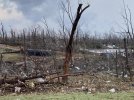warneagle
Member
Yeah, more consistency from office to office would definitely be appreciated. Easier said than done, of course.I guess it's probably a good thing the EF scale came when it did so at least the F ratings are consistently iffy and the EF ratings are subject to a little more realism... now if only we could get rid of WFO to WFO inconsistency and the notion that "as conservative as humanly possible = most accurate" then the F to EF inconsistency could be our only unsolvable problem lol
As far as the conservative ratings go, I think that might just be a natural bias in scientific thinking. A more conservative conclusion is seen as easier to justify and therefore more rigorous, versus a more extreme conclusion which is more likely to be subjected to criticism by other experts, even if the data supports it.



